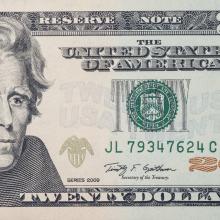harriet tubman
Despite the many revival services and conferences held every year across the country, it seems white Christians in the U.S. have yet to be radically transformed when it comes to justice advocacy. I’m not looking to label others’ revival experiences as “true” or “false.” Instead, I’m hoping that Christians in general — but white Christians specifically — learn to expand their understanding of what a revival entails. After the harm and reprimand I experienced in the white evangelical church for my dedication to social justice, I have returned to the Black church tradition in which I was raised. Being in this space has affirmed my belief that worshiping Christ and fighting for a more just world go hand in hand.
Ultimately, I think there are times when revival spreads to the streets for weeks on end but because it doesn’t happen within the four walls of a church where there is ambient lighting and bottomless coffee, we don’t recognize it.
Communal Sin
The psychological thriller God’s Creatures follows a mother who chooses to hide her son’s secret, a decision that has damaging ripple effects in her remote fishing village. The film explores how a community’s complacency in covering up sin can systematize and amplify evil.
A24
Charismatic leaders such as Jean Vanier can inspire and transform us. But when these leaders commit abuse, how do the movements they ignite pick up the pieces?
The National Museum of African American History and Culture, set to open Sept. 24, tells many stories of African-Americans of diverse faiths who have shaped U.S. history. Close to 10 percent of the 2,586 artifacts in its inaugural exhibitions are related to faith and religious history.
Rex Ellis, associate director for curatorial affairs, said the museum is essentially an intersection of uplift, spirituality and resilience.
“There is no way you can discuss, talk about or understand the African-American journey without understanding the very real role faith played in its history,” said Ellis, an ordained Baptist minister.

Image via Smithsonian Institution Traveling Exhibition Service/Flickr
Putting Harriet Tubman on the $20 bill isn’t going to fix any of this. But I find it hard to not be excited that a strong black woman is being honored for being a strong black woman. Is a $20 bill an imperfect vehicle for this recognition? Yes. But I’m encouraged by the fact that the U.S. at least wants to appear as if celebrating black people is a normal thing to do.

Image via Chones / Shutterstock.com
Goodbye Andrew Jackson, and hello Harriet Tubman!
Secretary of the Treasury Jack Lew is expected to announce April 20 that Tubman, the iconic Underground Railroad conductor, Civil War armed scout, and woman’s suffragist Harriet Tubman will replace President Jackson on the $20 bill, reports Politico.
AFRICAN-AMERICAN women’s wisdom emerges from an experience of triple (or more) oppression. Denied the dignity of womanhood, condemned for their skin color, whether too dark or too light, and often imprisoned by mis-education, demeaning and meaningless work, and a denial of their very humanity, African-American women have yet managed to forge a spirituality of hope and survival that has sustained them for centuries.
As Alice Walker noted, they dreamed dreams and had visions; they imagined a time and place when the pain and indignity of their lives would be transcended, not in some far-off heaven but right here in the future of their children and their children’s children. Somehow our foremothers persisted in their faith. They made rosaries out of beads and knotted string and learned scripture by rote memory. They resisted as best they could anything and anyone who attempted to keep them from living their faith on a daily basis.
Once freedom, so-called, came, they struggled, despite the callous disregard of their fellow Christians, to remain faithful. When their children were forbidden entry into diocesan or public schools, when they were required to sit in upper galleries and back pews, when they had to wait until last to partake of the sacraments, they did not suffer these indignities quietly but often walked out and with their meager resources built their own schools and church buildings.
My second grader helped me understand that the story of Harriet Tubman is still being lived out today in the lives of Latino families in my school and across the country.
Mary Bauer and Sarah Reynolds authored the report “Under Siege: Life for Low-Income Latinos in the South for the Southern Poverty Law Center.”
They explain, "Latinos in the South—many of whom came here to escape crushing poverty in their home countries—are encountering wide-spread hostility, discrimination and exploitation."
This report helps us understand the struggle for life that many of our Latino students take on, a clandestine struggle like the one Harriet Tubman made all those years ago.





